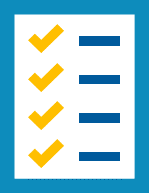AT-A-GLANCE
Organization: Maimonides Medical Center Department of Population Health
Innovation: Community Care of Brooklyn Navigator screening process
Goal: Prioritize relationships with patients who are referred for care management services through a redesigned screening process.
Key Features: Uses trust-building prompts to facilitate connections with patients; identifies care management needs based on patient responses; supports staff autonomy in guiding conversations with patients.
Poor health outcomes in the U.S. ― particularly for groups that have been economically and socially marginalized ― reveal that our current health care delivery model does not address the real issues that are driving today’s greatest health challenges. It is not medications or medical procedures that have the greatest impact on health outcomes, but rather a focus on undoing racism-based care disparities, addressing social and behavioral health needs, and integrating siloed and uncoordinated care delivery systems. To address some of these challenges, health care systems are increasingly investing in the design and implementation of screening processes that recognize relationship building with patients is equally as important as assessing patient needs, identifying their potential risks, and providing resources to better support health and well-being.
This profile details the creation of a relationship-centered, comprehensive care management screening process at Maimonides Medical Center’s (MMC) Department of Population Health in New York City. MMC’s Department of Population Health is a participant in Advancing Integrated Models (AIM), a national learning collaborative led by the Center for Health Care Strategies and made possible through support from the Robert Wood Johnson Foundation. EM Consulting, which supported Maimonides in developing this screening process, is a technical assistance provider for AIM.
COMPLEX CARE INNOVATION IN ACTION
This profile is part of an ongoing series from the Center for Health Care Strategies (CHCS) exploring strategies for enhancing care for individuals with complex health and social needs within a diverse range of delivery system, payment, and geographic environments. LEARN MORE »
MMC envisioned a new screening process that prioritizes building relationships with patients referred to their navigation center, called Community Care of Brooklyn (CCB) Navigator. CCB Navigator receives referrals from the MMC system and its community partners as well as patient self-referrals. It serves as a one-stop shop for all care management referrals and needs, reducing the burden on patients, community-based organizations, and the MMC health system. MMC Population Health leaders wanted the screening process and tool to elicit meaningful information that could help indicate the level of care management needed and match patients with the right resources.
In addition, the Population Health team wanted staff with varying backgrounds and education levels to be able to use the screening tool. Most importantly, they wanted to ensure the screening tool would remove barriers to health care access for all community members and advance health equity. Toward that end, the screening tool was designed to build and support trusting relationships between patients and CCB Navigator team members and facilitate follow-through for referrals and engagement in needed health and social services. While this tool was designed specifically for MMC, this relationship-centered approach can be applied to other health care organizations’ screening processes.
Screening and referral to care management services to address unmet health and social needs provide unique opportunities and challenges for both patients and health care teams. Screening tools that use traditional medical model risk stratification methodologies tend to elevate medical conditions and the pathology associated with complex health conditions over other factors that may be more relevant to the person’s needs. In addition, if data collection through screening is done poorly, there is a risk of overburdening patients, losing their trust, and potentially even exacerbating inequities. MMC focused on how the screening process occurs, knowing that “the how” largely determines the quality of information received, which in turn, influences patient engagement and health outcomes. Questions in the tool focus on relationship building first, before asking sensitive personal questions (e.g., about housing or employment status). The tool is brief, so as not to burden the patients or staff administering it, and is inclusive of essential medical information and functional capacities, but not restricted or overly weighted to medical conditions or pathology.
Research on patient self-disclosures indicates that 60 to 80 percent of people withhold important health and social information during health care visits out of concern about being judged. Research around relationship-centered care, specifically empathic communication ― defined as communication that is received as caring, kind and non-judgmental ― is conclusive: empathic communication in health care interactions improves patient engagement, self-disclosures, activation, adherence to recommendations, and health outcomes.
While health screening is not usually considered a clinical intervention ― likely due to medical assistants most often conducting screenings before the medical provider sees the patient ― it is in fact highly clinical. The quality of the screening determines accurate assessments, influences engagement in care, and can impact effective patient self-management. Because all contact with patients influences health, all contact with patients is a type of treatment. Reminder calls, check-in visits, home visits, screening, and assessment are not precursors to treatment ― they are treatment. Recognizing the screening itself as potentially helpful, activating, and comforting elevates the importance of the human connection.
MMC’s overarching goal was for the screening procedure itself to be healing and beneficial for all patients as well as staff. Patient experience and staff experience are so closely related they are often used as proxy measures for each other. If the staff conducting the screening were having poor experiences (e.g., feeling disconnected from patients, burdened, and/or confused), this would negatively impact relationship building and patient experience. For this reason, MMC wanted their tool and process to be clear and rewarding for staff by facilitating deeper, more human connections between staff and individuals served by CCB Navigator.
1. Integrate the “how” and the “why” of the screening interaction within the tool.
MMC employed the following five strategies in developing the screening tool and process to meet the goals discussed above.
To achieve this, a goal statement was included for each series of questions in the tool, followed by prompts for staff to establish a goodwill relationship (see example in sidebar below). These are not “scripts,” which underscore hierarchy by diminishing staff autonomy and demonstrating a lack of trust in decision making. Instead, these are prompts ― examples to encourage empathic connection. Empathic connection is a core strategy to address equitable care.
Without conscious and purposeful intent to engage in empathic communication with each person, there is often wide variation in aspects of communication that can impact the quality of those interactions. For example, without structured prompts and examples for how to inquire, we tend to engage in a myriad of “micro-empathy behaviors” with people we identify with, usually members of our own racial affinity group and individuals we do not have judgments or biases toward. Examples of micro-empathy behaviors include softer tone of voice, connecting statements, humor, supportive para-language (“uh huh” or “hmmm”) and other affirming statements. Without intentionality, these are often absent in interactions with people we do not identify with, which can create a poorer quality interaction and potentially result in less disclosure, activation, self-efficacy, and referral follow-through.

Use purposeful intent to engage in empathic communication.
Build rapport. Ensure that the patient feels like they are being treated as a whole person and feels better after the phone call than they did before the call. For example: (Connecting statement) “I’m so glad you called us today. How are you weathering during this time?” / “It is so cold now, suddenly!” / “I hear a dog, I love dogs!” (Self-disclosure version) “I had to get my winter coat this morning! It has been a tough year for all of us, I think!”
Reflection. In a way that feels comfortable, reflect what you heard to ensure the patient knows you understand them. For example: “You are hoping to find a psychiatrist for your son, someone who can help get him on Medicaid, and also someone to help with his disability application forms, is that right?”
Affirm strengths. In your own words, affirm that the patient called, meaning they are proactively seeking assistance for themselves or a family member. For example: “I just want to say I’m so glad you called. It sounds like you are a great advocate for your son / are taking steps to make sure you have safe housing / that your health is really important to you.”
2. Prioritize what is most important to the patient through the screening tool, screening process, and scoring system.
Recommendations, treatment plans, and referrals often do not take patient priorities into account, which in part explains the historically low adherence to recommendations and referral follow-through. This screening tool elicits what patients feel is most important and their top priorities.

Understand the reason for the call, in their words. Convey empathy.
Example: “What prompted you to call us today?”or “What is it you feel you need?” or “What sort of help are you hoping we can connect you to?” or “What matters most to you today?”
3. Alter the common screening flow by putting trust-building prompts and space up front and leaving demographic information until the end.
This modification allows a focus on relationship-building communications up front, and leaves transactional, closed questions to the end.

At the end, explain that demographic information will be collected.
Example: “Also, before we end, I will be asking you some basic demographic information. Your answers won’t impact your ability to talk with us and will help identify the best resources for you.”
4. Allow time during the screening to pause and summarize what the patient has said at specific intervals.
The tool seeks to uncover the highest priorities for the patient. This “pause and summarize” feature of the tool creates space for having a dialogue, confirming understanding, and acknowledging patient priorities.

Summarize the responses received. With the patient, determine if there are services available, would they be interested in being referred?
Prompt: What is the patient interested in getting a referral for?
5. Include clear expectations of what will happen next, who will have access to information collected, and specific time frames for getting back to the patient.
This was designed to lower patient burden for inquiring about these things or anxiety after the call is over about what will occur next.

Explain how this information will be used, and who it will be shared with.
Example: “Everything you share is confidential [list exceptions, if any]. I will share this with X, only to get you services or resources that would be helpful to you. After we complete this, I’ll let you know what services we have or know about that might be helpful and we can discuss what the next steps will be for you to receive them if you decide that would be helpful for you.”
A scoring process was linked to the assessment, which matched patients’ needs, preferences, and desires with the resources to address them. Each response is recorded and measures the patient’s general access to care, health conditions, ability to self-manage their care, and their social/emotional well-being. Staff can respond to individual patient priorities while also maintaining necessary guardrails that makes sure no critical or urgent needs go unaddressed. There was a “flag for supervisor review” notification within the scoring tool to alert clinical supervisors when necessary if a patient has an urgent need or is perceived to be at high risk of self-harm or to others. The interactive tool and scoring will help to enhance engagement and motivation by both staff and patients and facilitate higher rates of follow through to referrals.
Best practices built into the design of the scoring tool include:
- Formatting influences process. Open-ended text boxes influence how staff listen; skillful listening and patient sharing is often decreased with only check boxes. Both qualitative and quantitative data (e.g., check boxes and free text as well as closed and open questions) are necessary for high-quality assessment.
- Scoring based on medical, social, and behavioral factors provides a more complete picture. Medical diagnosis information is important to the assessment, yet may not be the best indicator of level of need. For example, many patients with mental health and substance use disorders are under diagnosed. Including functioning level, self-management capabilities, and existing strengths and resources moderate how impactful any given diagnosis is on individuals and helps provide a more accurate picture of need.
- Taking patient priorities and preferences into account when making referrals. Patient priorities and preferences are elicited as part of the assessment and are the primary considerations in referral matching.
- Using a continuum to better describe care management needs. Avoiding binary “yes or no” choices for care management allows for more nuanced assessment and more accurately matches patient needs to services.
- Allowing staff observations to add a fuller understanding of the patients.
Staff can add notes to referral sources and can receive clinical support when needed through a “flag for supervisor review” option.
The process for launching the new screening process and expanding complex care management services is a key step in ensuring its success. Recently, the Centers for Medicare & Medicaid Services (CMS) disseminated the Accountable Health Communities Health-Related Social Needs screening tool and noted that screening for health-related social needs “in clinical settings requires planning ― aligning priorities, training staff, and developing customized screening protocols.” MMC is committed to using best practices consistent with the CMS recommendations to implement this new screening tool. MMC intends to pilot the assessment initially with their Health Home patient population using their care managers, which are both licensed and unlicensed staff. Other steps underway to prepare for the launch include:
- Provide dedicated training on the screening tool and process for staff. Learning sessions will be consistent with the screening process goals and methods: empathic, interactive, engaging, and activating.
- Prioritize the feedback of staff using the tool to inform changes in the content or process of the assessment.
- Engage in small-scale testing of the tool and incorporate patient and staff feedback and process before large-scale implementation.
- Cultivate stakeholder buy-in, including staff, MMC leadership, community partners who are potential referral sources, and funders for the new relationship-centered screening tool and process. MMC developed one-pagers for these different audiences announcing the launch of their expanded complex care management services and new screening process.
In launching this work, the MMC is taking a step forward in their commitment to population health approaches, health equity aims, and integrated, relationship-centered care practices to achieve health and wellness for the community they serve.
About the Center for Health Care Strategies
The Center for Health Care Strategies (CHCS) is a policy design and implementation partner devoted to improving outcomes for people enrolled in Medicaid. We support partners across sectors and disciplines to make more effective, efficient, and equitable care possible for millions of people across the nation. For more information, visit www.chcs.org.
About EM Consulting
EM Consulting is focused on supporting and enhancing health systems in increasing health equity, improving population health and advancing trauma-informed, empathic and relational systems of care- for everyone. For more information, visit www.emorrisonconsulting.com.




